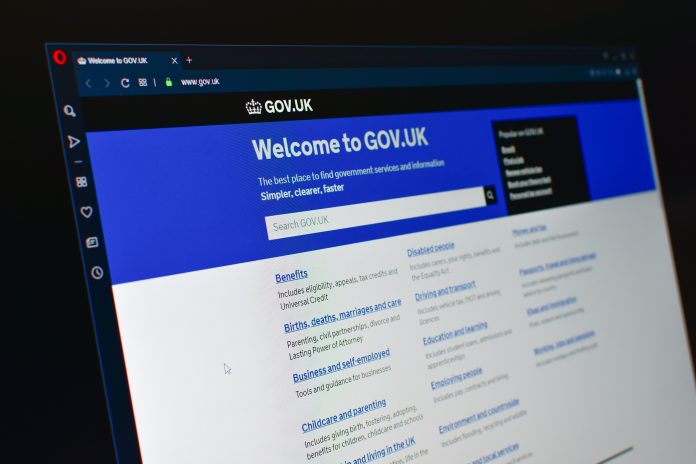The government’s Levelling Up Whitepaper aims to address the cost of living crisis and massive inequalities across the UK – but could technology help?
Both the Covid-19 pandemic and an escalating cost of living crisis have exposed the vast economic, health and social inequalities across the UK, with deprived communities and the most vulnerable being impacted the hardest
Public awareness of increasing social and economic disparities is growing as a result, with 52% believing that there is still too much inequality in the UK.
The government’s long-awaited Levelling Up Whitepaper aims to address this need by setting out ambitious plans to narrow the country’s geographical, social and economic disparities. This has pledged to boost productivity, increase living standards and improve access to public services in deprived areas across the UK – while also promising to place local leaders at the heart of future government decision-making.
Central to achieving this is providing local leaders and communities with the tools, knowledge and information needed to drive this transformation in the long term. While there is no ‘one size-fits all’ solution, technology and digital transformation can be the key to creating jobs, improving service delivery and streamlining local authority processes going forwards.
Here I set out to explore several of the key aims of the Levelling Up Whitepaper agenda, and outline how technology can help these be achieved.
Levelling Up Whitepaper: Driving job growth and productivity in communities beyond the Southeast
According to new research from the Centre for Economics and Business Research, tech and automation have the potential to increase productivity across the UK by 15% in the long term, with notable benefits in industries such as transportation, healthcare, and social work. This translates into the potential to create up to 3.3 million additional jobs across the nation and will go a long way to Levelling Up the current North/South divide.
In fact, a major study on the health and outlook of the UK’s science and technology economy has forecast the creation of 365,000 jobs by 2050 because of the UK’s transition to net zero, with the North West seeing the newest roles of any UK region. Most jobs will be created in specific sectors, such as the production of EV vehicles, electrical equipment and science and technology R&D. The benefits are also set to disproportionately affect the North of England in a boost to the government’s Levelling Up whitepaper agenda.
However, critical to achieving this success is reducing the huge gap between public sector organisations and technology firms – from smaller start-ups to larger corporates. We’re living in an age of networks, but often innovative technology companies and local decision-makers are siloed from one another, and from the researchers and investors needed to shape the public-purpose tech ecosystem around Levelling Up.
Business Networks have a huge role to play in filling this gap, providing a combination of products, services and platforms for transacting, managing, analysing and optimising the panoply of processes needed to do business in today’s global economy. As an example, the SAP Business Network can enable public sector organisations to be lead coordinators across organisations within their locality. Local authorities can help lead public sector procurement spending through these business networks to the benefit of local and regional businesses and start-ups with a fully digital process that extends to suppliers, services and logistics providers.
Another good example of a public/private partnership designed to Level Up is in Sunderland, where BAI Communications works with the authority’s Our Smart City plan to ensure the region benefits from 5G and wireless infrastructure. The project is supported by the Department for Levelling Up’s Getting Building Fund and has encouraged trials of self-driving vehicles in the automotive supply chain, remote learning across schools, and social care improvements using assistive technologies so that vulnerable people can live independently.
Streamlining processes and improving service delivery
With public sector organisations now facing unprecedented demands for their services, the need to adopt an agile operating model is greater than ever. An emphasis on cross-functional collaboration and a test-and-learn approach to delivering products and services is key. Agile organisations are defined by their ability to grasp citizens’ long-term demands and requirements and use these to feed into improvements to service delivery. They’re also more open-minded and flexible in adopting new technological innovations that are key for achieving tailored and effective services for all stakeholders.
Software such as financial spend management can go a long way to streamlining local authority processes. Effective spend management tools can not only reduce cash leakage and minimise supplier risk but, thanks to automation freeing up an organisation’s time and resources, can also enable businesses to set their minds to innovation and growth and be in the best possible position to meet any challenges that might come their way. With the added capacity, public sector organisations could pivot and shift resources to help support local economic activities such as reach-outs and support to start-ups, mentoring and coaching, and more. All these factors contribute significantly towards delivering a smooth, efficient and agile citizen-centric service delivery strategy.
Using data to provide insights and tailor services accordingly
Taking into account the needs and demands of citizens when streamlining and modernising operations and business processes, and incorporating citizen feedback into the decision-making process, is key to delivering a programme that will respond to the issues that matter most to local communities.
Collecting sentiment data from local communities on their experiences with public sector services and using the information to create a unified customer data platform to store information, helps public sector organisations to build a robust profile of respondents. Combining this with business process intelligence data enables public sector organisations to make decisions and deliver services with the citizen at heart and identify areas that need attention and improvement. This data could also be used to identify and support local economic regeneration activities and strategies, such as for employment and sustainability, to ensure the competitiveness and prosperity of local regions.
A great example of this approach is Christchurch City Council which adopted key technology in 2018 that allowed it to effectively visualise constituent service requests, enabling the organisation to develop a deeper understanding of its citizens. As a result, the council has adopted a citizen-first approach, meaning they can effectively serve constituents in the years ahead affected by the pandemic.
Final thoughts on
Former Secretary of State for Levelling Up, Housing and Communities, Michael Gove, once said that Levelling Up success would mean ‘where you live will no longer determine how far you go.’ This aspiration, central to the government’s Levelling agenda, is one local authority that will need to work hard to address. While there’s not one set strategy to help them achieve the agenda’s objectives, technology and digital transformation are sure to be key allies regarding job growth, enhancing service delivery and streamlining processes – all vital for helping to meet the government’s ambitious targets.
This piece was written and provided by Satpal Biant, Head of Public Sector, SAP UK&I











